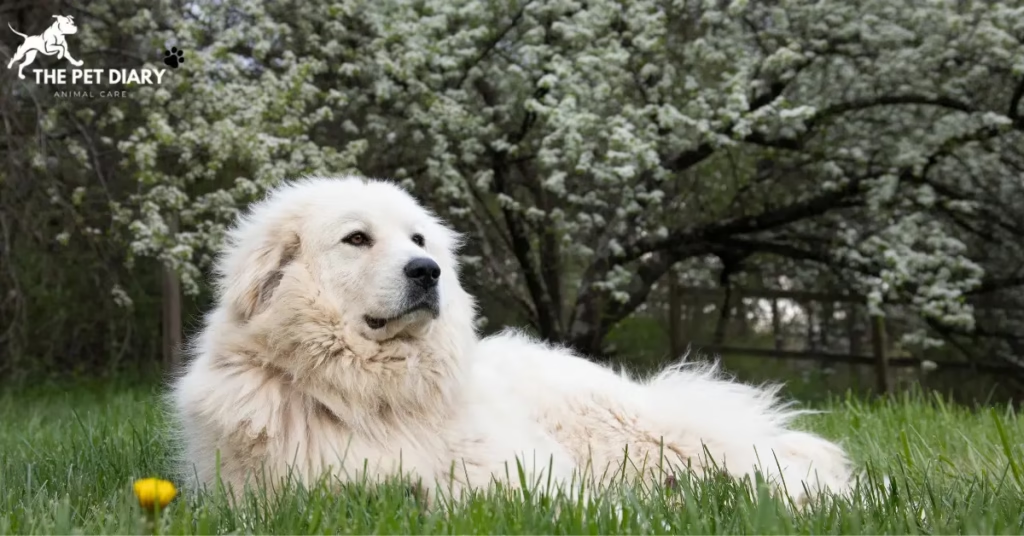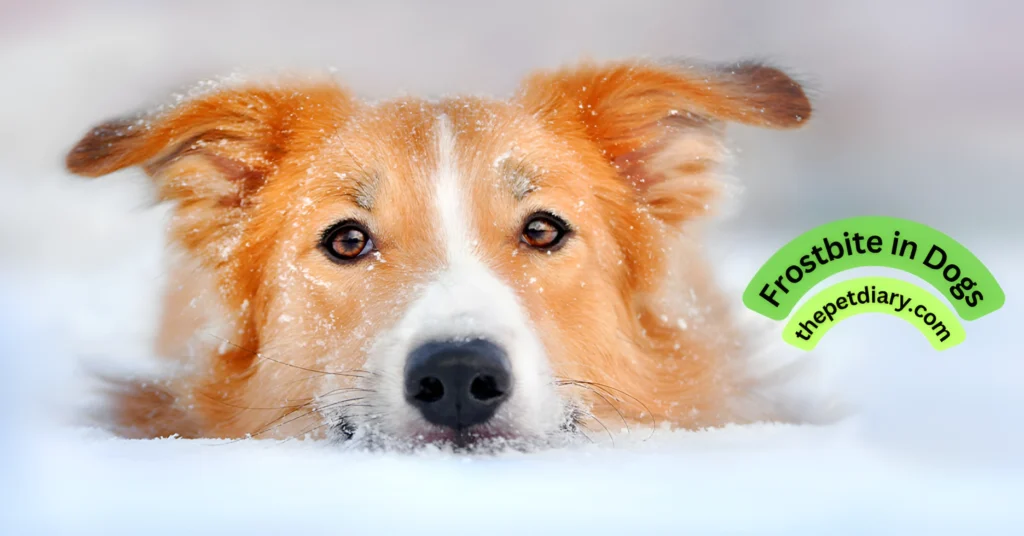Introduction of the Great Pyrenees Dog
The Great Pyrenees dog is a gentle giant known for its striking white coat, calm demeanor, and fearless guarding instincts. Bred for centuries to protect flocks in the rugged Pyrenees Mountains of France and Spain, the breed balances an affectionate family nature with strong independence. Families looking for a loyal companion often fall in love with the Great Pyrenees personality, which combines regal confidence with tender affection.
Whether you are considering adopting a Great Pyrenees puppy or learning how to care for an adult, understanding this breed’s history, size, temperament, and care requirements is essential.
Great Pyrenees Dog Appearance & Size
Typical Great Pyrenees Size and Weight
One of the breed’s most defining traits is its impressive stature. Adult males generally stand 27–32 inches at the shoulder and weigh 100–120 pounds, while females typically measure 25–29 inches and weigh 85–100 pounds. Their double coat, a dense underlayer topped with a long, weatherproof outer coat, protects them from harsh mountain climates.
| Age (months) | Average Male Weight (lbs) | Average Female Weight (lbs) | Height Range (inches) |
|---|---|---|---|
| 3 | 30–40 | 25–35 | 15–18 |
| 6 | 55–75 | 45–65 | 20–24 |
| 12 | 90–110 | 75–90 | 25–30 |
| Adult | 100–120 | 85–100 | 27–32 |
Coat Colors and Grooming Needs
Although primarily white, some Great Pyrenees dogs display light markings of gray, tan, or reddish-brown, particularly on the ears or face. Their luxurious double coat sheds year-round and experiences seasonal “blowouts” twice a year. Weekly brushing is necessary to keep the coat tangle-free and to reduce shedding. Regular grooming sessions also help owners check for skin irritations or parasites, ensuring a healthy and comfortable pet.
Great Pyrenees Dog Personality & Temperament
Family-Friendly Traits
The Great Pyrenees personality is a perfect mix of calm affection and steadfast protection. These dogs are famously gentle with children and display remarkable patience. Despite their large size, they are known as “gentle giants,” often lying quietly at their family’s feet or following loved ones from room to room.
Protective Instincts and Independence
Historically bred to work alone while guarding livestock, Perseus Mountain Dogs are naturally independent thinkers. They may be aloof with strangers and bark to alert their families of anything unusual. This strong guarding instinct is not aggression. Early training and socialization help channel this instinct appropriately, making them excellent companions for both suburban homes and rural farms.
Great Pyrenees Puppies
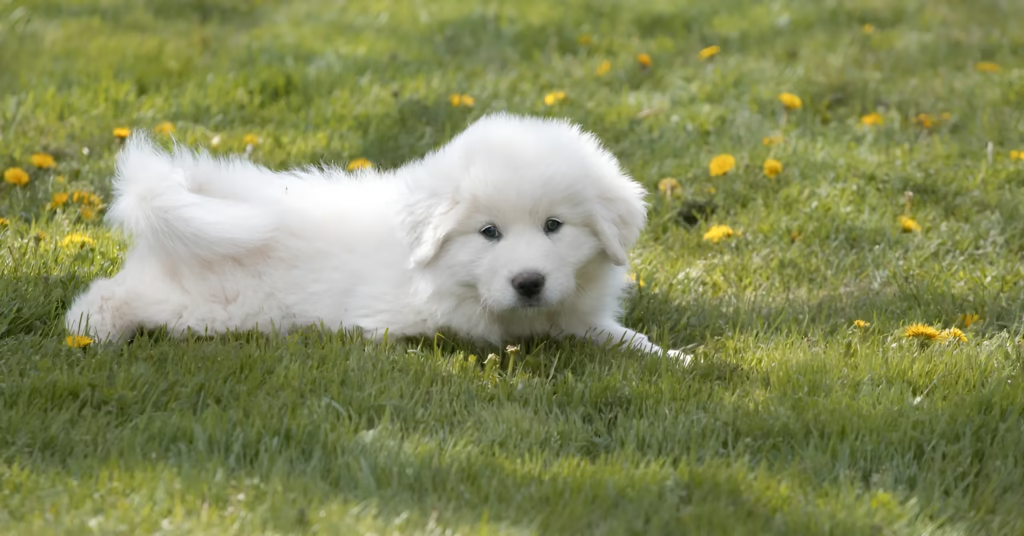
Growth Stages of a Great Pyrenees Puppy
A Great Pyrenees puppy grows rapidly during the first year, reaching nearly adult height by 12 months. Proper nutrition, high-quality large-breed puppy food, and regular vet checkups are essential for healthy development.
Training and Socialization Tips
Start obedience training early. Positive reinforcement works best, as these intelligent puppies respond to praise and treats but may resist harsh commands. Socialize them with other animals and people to ensure a balanced temperament as adults.
Buying vs. Great Pyrenees Adoption
If you’re considering adding a Great Pyrenees puppy to your family, research is crucial. Reputable great pyrenees puppies breeders will provide health clearances and background on the parents. Adoption is another excellent option; breed-specific rescues often have great pyrenees puppies for sale or adults ready for loving homes. Adoption not only saves a life but also helps reduce the number of homeless pets.
Great Pyrenees Mix Breeds
Crossbreeding has introduced exciting variations of the Great Pyrenees that combine its calm guardian nature with the traits of other popular dogs. Below are some of the most sought-after Great Pyrenees mix options, each bringing unique characteristics for families and farms.
Great Pyrenees Anatolian Shepherd Dog Mix
The great Pyrenees Anatolian shepherd dog mix is a powerhouse of protection. Anatolian Shepherds are famous livestock guardians, so when paired with a Great Pyrenees, the result is a highly independent, alert, and strong-willed protector. This mix thrives on large properties where it can patrol and guard, making it ideal for ranchers and farmers.
Great Pyrenees German Shepherd Mix
If you admire the intelligence and trainability of the German Shepherd, the Great Pyrenees German Shepherd mix may be a perfect fit. These dogs inherit the loyalty of the Shepherd and the gentle nature of the Pyrenees, producing a balanced companion that is both family-friendly and watchful. Early obedience training is essential to harness their energy and intelligence.
Anatolian Shepherd Great Pyrenees Mix
Similar to the Anatolian Shepherd cross above, but sometimes bred with slightly different lines, the Anatolian Shepherd Great Pyrenees mix typically displays an impressive double coat and a strong protective instinct. They often excel at guarding flocks and can adapt well to colder climates thanks to the Pyrenees’ dense fur.
Great Pyrenees Golden Retriever Mix
Affectionate and outgoing, the great Pyrenees golden retriever mix brings together the friendly personality of the Golden with the steady guarding instincts of the Pyrenees. Families love this mix for its playful nature and natural affection toward children, though regular exercise and grooming are musts.
Great Pyrenees Lab Mix
The Great Pyrenees Lab mix is another favorite for active households. Labrador Retrievers are energetic and sociable, so expect a friendly, loyal companion that enjoys outdoor activities like hiking and swimming. Consistent training ensures that the Pyrenees’ independent streak blends well with the Lab’s eagerness to please.
Great Pyrenees Poodle Mix
For those who want a low-shedding guardian, the Great Pyrenees poodle mix. Sometimes called the Pyredoodle, combines the Pyrenees’ majestic size with the intelligence and hypoallergenic coat of the Poodle. Regular brushing is still important, but this mix often sheds less than a purebred Pyrenees.
Care and Maintenance of the Great Pyrenees Dog
Caring for a great Pyrenees dog involves more than love and attention. It requires understanding the breed’s physical and mental needs.
Exercise Needs
Despite their size, Great Pyrenees dogs are not hyperactive. A daily walk and supervised playtime in a secure yard are usually enough. However, mental stimulation like puzzle toys or basic obedience training prevents boredom and excessive barking.
Grooming & Shedding
The Pyrenees’ double coat requires weekly brushing to manage shedding and prevent mats. During seasonal shedding (spring and fall), daily brushing may be needed. Regular nail trimming and dental care round out the grooming routine.
Health & Lifespan
The Great Pyrenees lifespan typically ranges from 10 to 12 years, though some live longer with proper care.
Common Health Issues
Like many large breeds, the Pyrenees is prone to hip dysplasia, elbow dysplasia, and bloat (gastric torsion). Regular vet checkups and a balanced diet help reduce these risks.
Great Pyrenees Life Expectancy and Wellness Tips
| Health Concern | Average Onset | Prevention/Management Tips |
|---|---|---|
| Hip Dysplasia | 1–3 years | Maintain a healthy weight and provide joint supplements |
| Bloat (Gastric Torsion) | Any age | Feed smaller, more frequent meals; avoid vigorous exercise right after eating |
| Heart Issues | Middle age | Annual vet screenings, quality diet |
| Osteosarcoma | 6–10 years | Early detection, prompt vet care |
Routine exercise, high-quality nutrition, and preventive veterinary care can extend a great pyrenees dog’s life while ensuring comfort in their senior years.
Training & Socialization of the Great Pyrenees Dog:
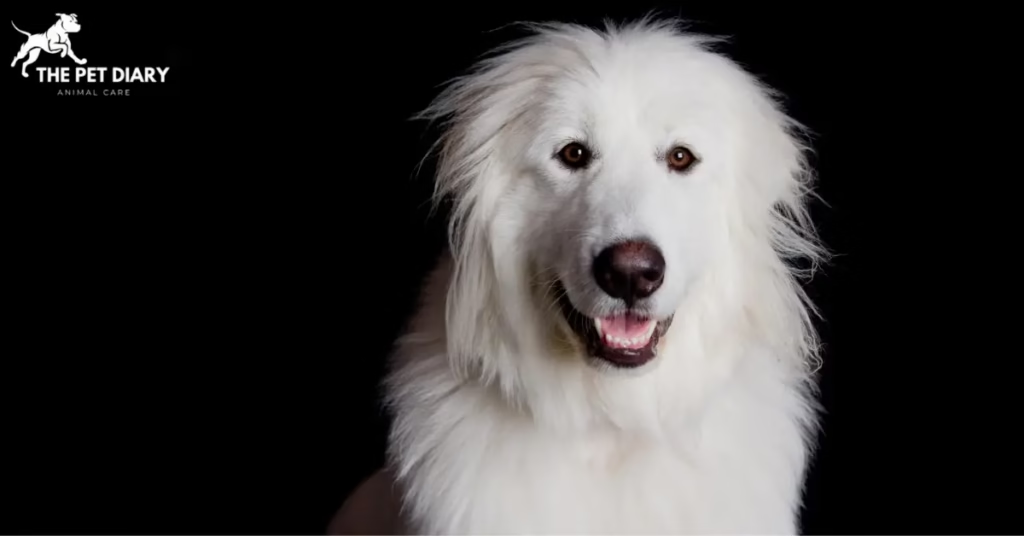
Early Obedience Training
Begin training your great pyrenees puppy as early as 8–10 weeks. Use positive reinforcement, treats and praise rather than harsh commands. The breed is intelligent but independent, so short, engaging sessions work best.
Managing Barking & Guarding Instincts
The Great Pyrenees’ natural guarding behavior means they may bark at unfamiliar sounds. Early socialization with people, pets, and environments helps them differentiate between genuine threats and everyday noises. Consistency is key: reward quiet behavior and teach a “quiet” command.
Leash & Recall Training
Because of their size and strength, leash manners are critical. Start with a lightweight leash for puppies and graduate to a sturdy lead as they grow. Recall training is equally important; while these dogs are loyal, their independent streak may lead them to wander if not properly trained.
Cost & Ownership of the Great Pyrenees Dog
Bringing a great pyrenees dog into your life involves a financial commitment beyond the initial purchase or adoption fee.
Great Pyrenees Price Breakdown
- Purchase from a Breeder: A reputable breeder typically charges between $600 and $1,500 for a Great Pyrenees puppy, depending on lineage and region. Show-quality dogs can cost more.
- Great Pyrenees Puppies for Sale vs. Adoption: Adoption through a rescue or shelter is often $200–$500 and usually includes vaccinations and spay/neuter services.
Ongoing Expenses
| Expense Category | Estimated Annual Cost |
|---|---|
| Food (large-breed diet) | $600–$1,000 |
| Veterinary Care | $300–$600 |
| Grooming Supplies | $100–$250 |
| Training & Socialization | $100–$300 |
| Misc. (toys, bedding) | $100–$200 |
These figures vary by location. But they illustrate the need for a realistic budget.
Finding a Reputable Great Pyrenees for Sale Breeder
Responsible Great Pyrenees puppy breeders will answer your questions and welcome you to see where the puppies are raised.
Adoption and Rescue
Don’t overlook Great Pyrenees adoption. Breed-specific rescues and shelters often have purebreds or Great Pyrenees mix dogs needing loving homes. Adoption saves lives and reduces the demand for unethical breeding.
Living with a Great Pyrenees
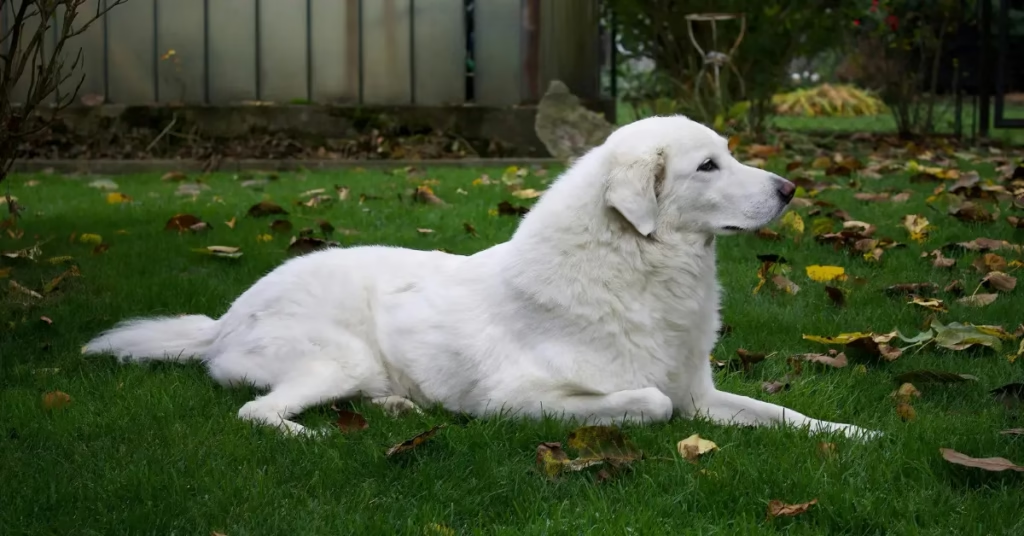
Owning a great Pyrenees dog is a unique experience. Their calm yet protective demeanor makes them wonderful companions, but potential owners must be prepared for their size and independence.
Space Requirements
These dogs thrive in spacious environments. A securely fenced yard or rural property is ideal. While some adapt to suburban homes, apartments are not recommended unless you have ample time for daily exercise.
Compatibility with Children and Other Pets
The great Pyrenees personality shines in family settings. They are gentle with children and protective of their “flock,” whether that’s livestock or human family members. With proper socialization, they coexist peacefully with other pets, including cats and smaller dogs.
Climate Considerations
Thanks to their thick double coat, Great Pyrenees dogs tolerate cold weather exceptionally well. In warmer climates, provide plenty of shade and fresh water, and avoid strenuous activity during peak heat.
Why Choose a Great Pyrenees Dog?
The Great Pyrenees is more than a beautiful white dog. It’s a loyal friend and steadfast guardian. From their ancient history as mountain protectors to their modern role as beloved family pets, these dogs offer an extraordinary blend of independence and devotion.
Key Takeaways
- The great pyrenees’ size and double coat make them natural protectors.
- A calm yet watchful Great Pyrenees personality suits families seeking a gentle giant.
- Regular grooming, training, and veterinary care are essential for a long, healthy life.
- Adoption or purchasing from reputable Great Pyrenees puppy breeders ensures you welcome a healthy, well-socialized puppy into your home.
🐾Conclusion of the Great Pyrenees Dog:
Majestic, gentle, and fiercely loyal, the Great Pyrenees stands as one of the world’s most remarkable dog breeds. Whether you’re drawn to a purebred guardian or a charming Great Pyrenees mix, these dogs reward patient owners with unwavering affection and protection. From the tiny paws of a great pyrenees puppy to the dignified presence of an adult, this breed embodies both elegance and strength. By understanding their history, needs, and personality, you’ll be ready to welcome a loving, lifelong companion into your family. 👉 Learn more about this amazing breed here: [thepetdiary.com]
🦴Great Pyrenees Dog FAQS:
Q1: What is the average lifespan of a Great Pyrenees dog?
The Great Pyrenees lifespan is typically 10–12 years with proper diet, exercise, and regular veterinary care.
Q2: Are Great Pyrenees good family dogs?
Yes. The Great Pyrenees’ personality is gentle and protective, making them excellent companions for children and other pets when well socialized.
Q3: How big does a Great Pyrenees dog get?
Adult males usually weigh 100–120 pounds and stand 27–32 inches tall; females weigh 85–100 pounds and stand 25–29 inches tall.
Q4: How much exercise does a Great Pyrenees dog need?
Despite their size, Great Pyrenees dogs only need moderate exercise, about 30–60 minutes of daily walks and supervised yard time.
Q5: Do Great Pyrenees dog shed a lot?
Yes. Their thick double coat sheds year-round and “blows” seasonally. Weekly brushing (daily during heavy shedding) keeps it manageable.
Q6: What is the price of a Great Pyrenees puppy?
The Great Pyrenees price from reputable breeders ranges from $600–$1,500. Adoption fees are generally $200–$500.
Q7: Are Great Pyrenees dog easy to train?
They are intelligent but independent. Start early with positive reinforcement and consistent, patient training sessions.
